Journey Of Self-Realization: Making Dreams Come True With Amy Herman
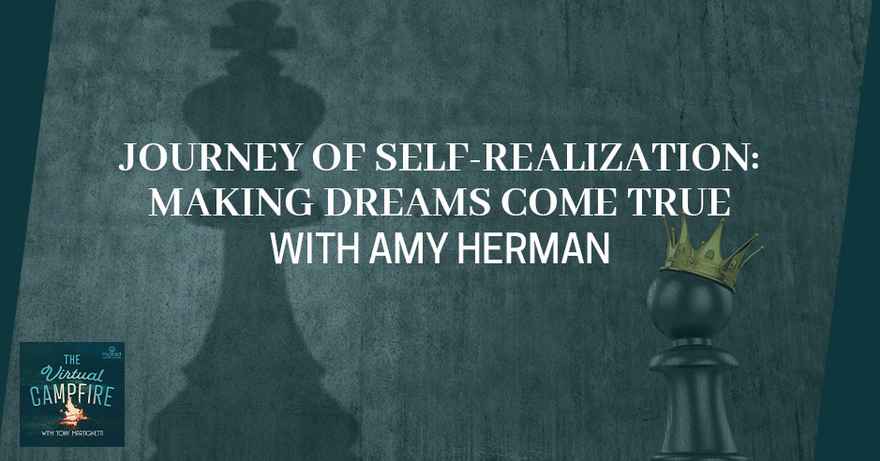
Pursue what you are passionate about. It is never too late to do something you love. Because there is no such thing as seizing the moment, you have to make the moment. This is the life of art historian Amy Herman. Amy is the President of The Art of Perception and the author of Visual Intelligence. She uses works of art to sharpen observation analysis and communication skills. In this episode, she joins Tony Martignetti to share how she found her passion for art. Learn how to achieve self-realization and how to engage with the people of your life by tuning into this conversation.
---
Listen to the podcast here:
Journey Of Self-Realization: Making Dreams Come True With Amy Herman
It is my honor to introduce you to my guest, Amy Herman. Amy is a Lawyer, an art historian who uses works of art to sharpen observation analysis and communication skills by showing people how to look closely at painting, sculpture and photography. She helps them hone their visual intelligence to recognize the most pertinent and useful information, as well as recognize biases that impede decision-making. She developed her Art of Perception seminar in the year 2000 to improve medical students’ observation and communication skills with their patients when she was the head of education at The Frick Collection in New York City. She subsequently adapted the program for a wide range of professionals and lead sessions internationally for the New York City Police Department, FBI, French National Police, Department of Defense, Interpol, State Department and many others.
In her highly participatory presentation, she demonstrates the necessity first to visual literacy and how the analysis of works of art affords participants an innovative way to refresh their sense of critical inquiry and skills necessary for sharper performance and effective leadership. The program has been featured in The New York Times, Wall Street Journal, CBS Evening News, Smithsonian Magazine and many others, as well as her TED Talk A lesson on looking, which went live in December 2018. Her book, Visual Intelligence: Sharpen Your Perception, Change Your Life was published in May of 2016 and was on The New York Times and Washington Post's bestsellers list, as well as on my list of the bestsellers. Her new book is due in December 2021 and is called Fixed.: How to Perfect the Fine Art of Problem Solving. She has another book due in 2022, which is called Smart: Open Your Eyes to Boost Your Brain, which is geared towards young adults. I am overcome by how prolific you are, Amy. I am thrilled to welcome you to the show.
Thank you very much for having me. I’m excited to be here. Given the virtual world that we've been living in, it's wonderful to engage in as close to a face-to-face conversation as one can have.
I had to read your full bio because I'm overcome by the impact that you have on the world. The work you do is impactful in general but it's what we need as we start to become more in touch with each other and reconnected. I've been in touch with your work for a while but I think it's now time for your work to be seen by many others.
Thank you very much. We're at a critical juncture. The world is coming out of this strangest of times and we have to refresh and relaunch everything, including our own sense of awareness, self-perception, how we engage with the people closest to us and even the people that are at arm’s length to look for silver linings. It's a great time to reassess everything.
Be open to things. Have a growth mindset rather than a fixed one.
What drew me to you are these elements of your eclectic past, art history, lawyer and your ability to also play in the business world too with different people in different places. Some of the things that I've appreciated about my past too are not being in one box and being able to navigate the world of art, business, science and see how they all interplay.
Many of us have our feet in many different worlds but I love the idea that these are all connected for me personally and professionally. I tell people that, “You may do your job and then go home at the end of the day, but there's no bright line. You still live in the same world. To be able to negotiate your world professionally and personally, they're the same world.” Many of the skills overlap. I love when people leave one of my sessions and say, “I can't wait to tell my wife or kids about this,” because the same level of engagement is involved personally and professionally.
I want to get this party started and let's stoke the fire. What we do on the show is we help you to share your story of transformation, how you got to where you are now, making such a huge impact. We do it through what's called flashpoints, points in your story that ignited your gifts into the world. What I'd like to do is give you the space to share that. You can start with wherever you like, stop along the way and let's see what's showing up. Without further ado, my friend, Amy, please take it away.
Thank you very much. As you were talking about these few moments, we have these moments of clarity. I can think about a couple that comes to mind. What links all of them is something that I've been lucky enough to have been born with. It's the idea of being open to things. Somebody explained to me and there's a name for this. It's the difference between a growth mindset and a fixed mindset. The fixed mindset is, “I'm here. I'm talented. I'm good at what I do and I'm going to show the world what I have.” The growth mindset is, “I am good at what I do but I have so much more to learn, to bring in and learn about myself about others that I always want to seek to innovate,” and happily, I identify with the latter. I'm not a fixed mindset person. Once we slip into the fixed mindset, we close a lot of doors without realizing it.
In college, one of those moments that I had was studying International Affairs and took Art History class as a filler. Back in the old days, they used to turn the lights out and put slides up. These two slides went out, two paintings by Mark Rothko and they literally took my breath away. I thought, “My goodness, somebody painted these. Somebody had the imagination, wherewithal and the thought to pay these incredible paintings.” It was this a-ha moment that painting could affect me to the core.
I carried that love with me forward. Even though I went to law school, studied law and became a litigator, I had that inherent love of art and it propelled me in a lot of different directions. I volunteered in museums, took all kinds of art programs when I should've been going to Tax Law classes in Washington DC. It propelled me and I could never figure out a way to make a career of it. It ended up undergirding everything that I did. Eventually I realized, “I knew what I love to do and I had to shape a career around it. A career wasn't going to find me. I had to figure out a way to infiltrate art into what I was doing.”
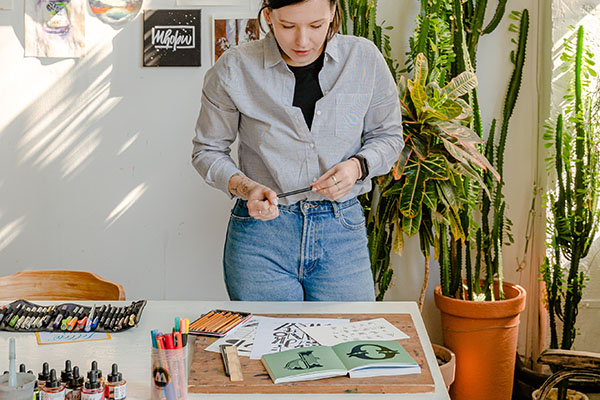
I'm going to fast forward all the way to 2012 and there are lots of points to fill in but I think this one is germane to so much of the world that we live in. I was boarding a plane in 2012. I was leaving Ohio and was flying home to New York. I had taught five different police departments in five days. I was beyond exhausted, like the kind of tired that caffeine doesn't help. All I wanted to do was plug in my headphones, go to sleep and hear wheels down Newark Airport. Who sits down in the row in front of me? A Chatty Betty. Have you ever had a Chatty Betty on an airline? Someone who's lovely but wants to talk. Even as she was putting her luggage in, she said, “There's no one in our seats. We can talk.”
I have the beginning of a headache. My head was starting to boom. I'm thinking, “This isn't going to end well. I have a headache. I want to go to sleep. I have this nice woman sitting in front of me. She's very chatty and I don't know how to tell her that I can't talk. I am in pain.” I never got around to telling her that I couldn't talk. I listened, we talked. I took medicine, we talked. The next thing I know we land at Newark. It was right after Hurricane Sandy. I went to Newark instead of LaGuardia. I remember that.
We're in the jetway and I said to her, “It was nice talking to you. Maybe we'll have lunch in the city one day.” She shakes her head and says, “No.” I said, “Do you want to exchange cards?” She said, “No, I don't give my card to anybody.” She reaches over and says, “I'll take yours. You have a story to tell.” I said, “Who are you?” She said, “I'm a literary agent and you're going to write a book for me. It is going to be a best seller because you have a story to tell.” I said to her, “I don't have time to take a shower. I don't write books.” She said, “You will. I'll call you and we'll have lunch.” Her agency is my agency now. I wrote a book for her and her agency. It's sold over 100,000 copies, translated into nine languages. She's on speed dial. I don't make a move without her.
She sold my 2nd and 3rd book. The reason I say that story, I was one hair away from putting headphones in and saying, “I can't talk, have a headache. I'm going to sleep.” It was a life-changing conversation. When I say life-changing, life-changing, it had never entered my mind to write a book and a total stranger and one conversation on an airplane catapulted me into a whole other world because I loved my work. My work was important but now I can share my work worldwide because the book opened the door. The woman on the plane polished the knob and opened it for me. That was the clarifying moment. I've had a number of them since then. Discovering that art resonated with me at a visceral level. I put the two together and taken those opportunities. As I say to my colleague, “We can't seize the moment. We have to make the moment.”
I feel like I want to drop the mic here and say, “There's nothing more powerful than seeing that come alive in that one conversation.” The flip of one decision changed everything for you but also to rewind to that moment of seeing those pieces of art for the first time. I was thinking of art as an interesting thing. When you realize that it's the story behind it, there's more to it than seeing a picture. It's almost like you start to breathe into it and say, “I'm seeing something different that I never saw before.” It's like making you feel something emotional. At least, that's how I felt. I've heard people feel that same way about a musical piece or anything they get passionate about. When you were then were able to say, “I made a connection between that,” and now seeing that's something that you can use as a vehicle to create change.
You can't seize the moment; you have to make the moment.
What all things have in common is human creativity. We're all human but before, we are doctors, lawyers, engineers, surgeons or surveillance agents. I always say art is the greatest chronicle of our time. It's all created by humans. Music is also created by humans. I tell people that when we're missing information or something called an Intel gap, “Default to your humanity and you have this whole other resource of information telling you what to do.” That's how I look at art. I look at it as the end result of this human creative process that we all possess a certain level of it. We're not all Picasso or Mark Roscoe. We all get that but we have the ability to be non-linear thinkers.
I want to ask the question to take you back a little bit. If you were to look at your childhood, A) Would you think that you'd be dabbling in the world that you're in right now, and B) would your family have ever imagined that you're doing what you're doing now?
If I've learned anything in my advancing age, it’s nothing's black and white. The first answer to your question, it’s absolutely not. I was going to be a lawyer. As a kid, I was encouraged to be competitive. I had been raised always going to museums and loving, looking at pictures. In the world that I grew up in, art was not a career. My father was in the sciences. My mother was politically oriented civic-minded. It seemed natural that I would go to law school and be this very linear objective thinker. The answer is no. My family and I would have never envisioned it.
When I made the switch, left the law and went into the art world, I remember having a conversation with my father. He said, “There are two things you have to think about, A) can you support yourself?” I did because I had gone to law school and been a lawyer. He said, “If you can support yourself and you believe making this switch is going to make you happy, then you need to do it. Not you should do it.” What I've discovered is my work gives me so much happiness that it's the guiding force. I spent so many hours a day. I worked seven days a week, but when you love what you do, people say, “It's not work,” but it's still work. I have work to do. I love it so much that I don't shut my computer for the day and say, “I'm not going to think about this anymore.” I'm always thinking about engaging works of art with different groups of people. The answer is no, but I evolved and my family evolved. I dare say my work has become a family affair. My whole family is intimately involved in what I do.
Something about the way that you're describing this makes me think about what is the pattern that people need to think about where there are things that are showing up in their mind, constantly, the things that they can't get out of their head, as they're going through their day job and patterns that they've maybe stuck in, that's sticking in their head, how can they weave that into their day job or connect the dots between what their chosen path is and the thing that won't get out of their head?
My son has a phrase for this. He always tells me, “So-and-so lives rent-free,” in my head. When you have something that lives rent-free in your head, you have to start collecting rent, mining it and understanding why it's in your head so much. From college on, I was looking at art, engaging with art and other people. Even though I had a day job with lawyers and in the courtroom, I did the most with my spare time. I became a docent at the University Art Museum in the town where I lived. One of the things about the virtual world as a result of the pandemic, there are one million different things online now to explore. You can take classes and learn whole new skills that I dare say did not exist before the pandemic and those aren't going away.
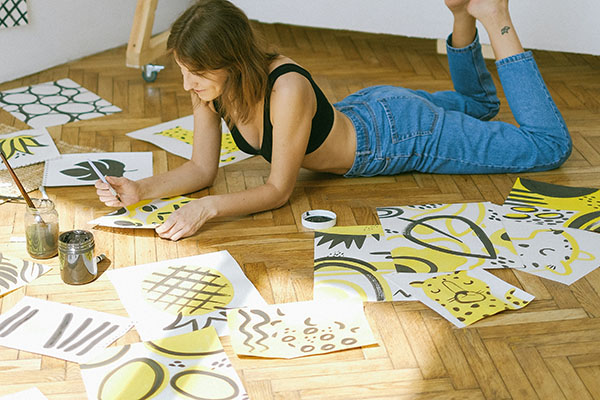
If something is living rent-free in your head, make the most of it. When your day is over, take 1 or 1/2 an hour every day and pursue it online. One of the examples I'll give you is my world came to a hard stop in March 2020. When the pandemic hit, I couldn't fly anymore. All of a sudden, all the museums around the world up their ante. They put their collections online in ways that nobody would have ever thought of. Every day when I wasn't out there traveling, I go to a different museum and looking at collections that I was never able to see before. It was mind-expanding. When people have passions that are separated from their day job, find a way. If you're passionate enough, you don't have to work it in to monetize it right away. That's steps away, but find a way to pursue it, learn about it and be creative. When the opportunity comes along, you'll know it and seize the opportunity.
We're going to take a slight detour because I love that where we're at. I'm going to ask you, which physical museum would you most like to be in?
That's always a tough question because it changes by the day. There are so many. Part of me wants to be in a European museum that's been around for 200 years and drink in the work that I haven't been able to see. Part of me wants to be in Queens in New York, in Long Island City, in Noguchi Museum, the purest of sculpture. Its indoors and outdoors. It rains on the sculptures. It's the purest form of art. There are no labels. It's you and the art. It split. Part of me wants to run to London and go to the National Gallery, Portrait Gallery and go to the Tate and drink it all in because I feel like I haven't seen it in person. Part of me wants to be in this small intimate atmosphere, just me and the art.
Maybe coming back into your story and sharing when you first decided to go out on this path. The book was one part of it, but tell me more about the journey into creating the art of perception. You had the passion, but what about the reception? How did people receive it? I'm sure there were a lot of naysayers initially. How did you overcome the naysayers? Tell me about the early days of your journey into the art of perception.
The earliest days are definitely the hardest because you're trying to gain traction and literally pay the bills. You're trying to do everything but the clarifying event for leaving my day job into doing this full-time. I was already in the art world. I had started the program at The Frick Collection. I was the head of education at The Frick Collection in New York. First, I made the switch from law to the art museum. The hardest decision was to leave the structured art world and start the art of perception to be able to get this program out to the world. The museums were wonderful, but they were interested in The Frick Collection. It was going to be an offer at The Frick Collection. I wanted to make this a global program.
The catalyst was my mother dying in 2010. I say that in a celebratory way because she was the catalyst. She was a role model in many ways. I told you she was very civic-minded. She died on Memorial Day. After the dust had settled, I said to my father, “Life is short.” We watched her die in seven weeks. I said, “I know what I am meant to do and I need to get out there and do it.” I don't know what's going to happen in the future. I don't want to ever regret years down the road say, “Why didn't I try to do this?” She died in May. In December, I gave my notice and went out into the world. I remember a good friend of mine who was chief of staff of the vice-president in the White House at the time, 2011 invited me to come to have lunch and come to the White House to get off on the right foot.
Art is the end result of the human creative process.
That was February 4, 2011. Since then, I have been on so many planes and places. Whenever I'm tired or beleaguered and I'm getting on some little prop plane, it's 10:00 at night. There have been delays, I feel as if my mother's pushing me saying, “Get out there and do this. You made this decision. You have a message to take out there. Get on that plane and go do it.” I do. I get on planes and I go. I don't complain about it because I was worried about whether this would gain traction but now, I'm very fortunate. It's all word of mouth. I don't have to market this or tell people, “I've worked with the CIA and the FBI. I train Navy SEALs every year.” It's the idea that I say to them, “I promise this works. It'll work.” I wouldn't engage with someone if I didn't think it wasn't going to work for them.
It didn't work for them. There might be bad publicity around that like, “It's a bunch of crap.”
That's the last thing I would ever want. I've never had someone come up to me at the end and say, “This was a complete waste of my time.” I always say that, “If you've come away looking differently at one aspect of your work, we've had success. I've done my job and you have successfully participated in this.”
When you think about the little pushes that we need to step out of our comfort zones and make the thing happen, to get on that plane, you have these catalysts in your lives. That's why I think these flashpoints are important things to recognize the moments that have gotten us into that conversation. My tagline is, “Inspiration through honest conversations.” You have had a lot of these conversations that have propelled you into your moments of like, “This is what I need to be doing right now.”
Having honest conversations with other people and with yourself is imperative, especially when you're going to go out there because you have to be genuine, “This is who I am on the stage when I'm presenting and writing. It's me the same all the time. I don't have a stage presence or writing voice.” I love when people say to me, “I read your book and I hear you.” That's what I want. It’s consistency. I'm very lucky this isn't a job. This is the way I live my life.
That's what we need more of, people who are resonating themselves all the way through all the work that they do. There's no online presence that is different than who they are in person. It’s cutting through the noise of all the stuff that you hear online. As you reflect back on your journey to getting to where you are now, what are the things you've learned about yourself? I know we've covered a lot of ground, but what are 1 or 2 lessons that you think about your job or journey and you say, “These are the things that I want to take away from my journey that is most important about me?”
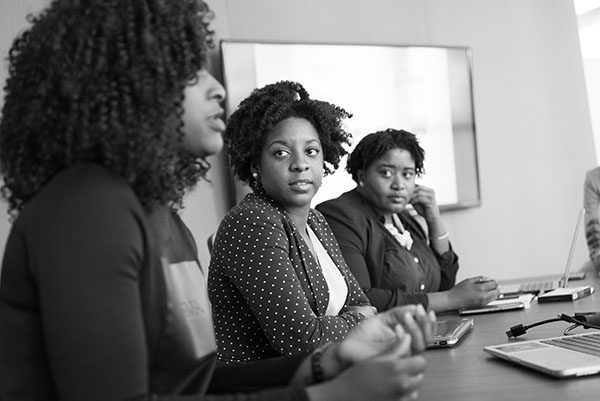
The first one that comes to mind, I've always been an extrovert, a talker in the room and the head of the safety patrols in fifth grade. I was always out there. I've learned a lot of things about myself. The first one is to be quiet. Listen to other people. The great Apollo Robbins said, “We have 2 ears and 1 mouth for a reason. Use them proportionally.” The author, Stephen Cody, also says, “The majority of us listened to respond instead of listening to understand.” I have learned over the years that I can be so much more responsive if I listened to understand and listened to what people are saying. I have learned to keep my mouth shut. It's important because it's not about what I have to say.
It isn't. It is about what other people have to say. I've also learned that when I am speaking, I need to be cognizant of not only what I'm saying, but how is it being heard? Who's hearing? Who's listening to me? In what context are they taking this in? Rather than being this trailblazer, “I’m out there. I’m going to talk and you're going to listen to me.” No, I'm going to listen to you because I can only be as effective talking to you as I am listening to you. It's been a powerful, eye-opening lesson because not only do I listen to people but I watch people how they operate and what they're doing. In turn, it enables me to not only respond better but to be more empathetic and empathy was my second point. The idea of empathy they said, “It's the greatest knowledge because it allows us to leave our egos and get into the mind of somebody else.” The idea of listening and being empathetic, I've learned that about myself and how valuable it is for self-realization but also with my engagement, not only with my family but with all my stakeholders in the world.
That's such an important lesson for everyone to know. It's funny that you ended the listening with the watching because I think about that a lot. Especially because we've been on Zoom for so long, people will think about how much we have to talk, we’re talking on Zoom but it's not about talking. It's about watching and taking in the visual cues. What can you learn by looking?
It’s observing sometimes quietly. I know people have all kinds of stuff in this world of Zoom that we've lived in. Animals throw up, kids climb into your lap, cat runs and all of this happens. I get it. When people turn the camera off, I want to say to them, “Don't opt-out. If you don't want me to see your messy house, I'm not going to judge your messy house. You're seeing my empty apartment. I'm not judging you. I want to see you.” Some people are either very self-conscious on camera or they don't want to be seen. One of the downsides of this virtual platform that we're all dealing with is it gives you the opt-out. When you're called into a meeting at work, you can't opt-out and say, “I'm going to call in from my phone.” It doesn't work that way. I have groups of a thousand people and I'm talking to them. I can't see them all. I love the a-ha moment. I love when their eyes roll or where they say, “I get it.” We have to make do but the watching part is important.
As you think about the stuff you're up to, the visual intelligence has been like a foundational book, and now you're moving into some new pieces that you're working on. What are the things that are top of mind for you around the work you're up to now?
It's been top of mind because when I was thinking about writing this book, I told my publisher, after the first book, I said, “I'm not going to write a book.” You know how some people write books right away. If a book has been successful, they go out and write a book. I say, “Nope, not me. I'm only going to write when I have something to say.” It took me a couple of years to figure out what I want to say. As my client base grew, it’s not just grew but it's diversifying. When I started working with Doctors Without Borders, NATO and people in the furniture business, it was all over the place. One of my editors asked me questions, “Why do people keep coming back to you? What's the common thread between NATO and new bank vice presidents? What connects them?”
When you have something that lives rent-free in your head, you have to start collecting rent.
I had to think about that. I said, “Let me think about it. Let me ponder it.” I realized everyone had a problem to solve. Everybody was facing some kind of problem. Whether it was an economic shortfall, it was a me-too moment or attrition. Whether financial shortfall, racial, injustice, everybody had to do a profit. Everybody was looking for a new way to solve a problem. They thought, “It's got the art lady. Maybe she'll help us solve problems, maybe looking at art, nothing else has worked.” They all had a problem to solve. That was the impetus for thinking about putting that on paper. I already had so much of the material. The book is about people that I've worked with to solve different kinds of problems. We've used the artist's creative process as the template to think about how to solve those problems.
It's amazing because of the fact that when you go about your journey, the stuff for your next book pops out of all the things that you lived through, experienced and then you have that moment of you're like, “It's obvious what my next thing has to be about because it's the things that are showing up in my life, my work and then the book almost writes itself.” I'm making it sound easy.
Let's say the idea is the hardest part and the mechanics of writing the book are the most laborious part. I had one other incident I can share with you to clarify. Back in 2017 or 2018, I go all kinds of places. I was invited to stay in a convent with a group of nuns in Ohio in Cincinnati. I was doing a session at the local museum. They were going to be the beneficiary. They are Little Sisters of the Poor and they raised money. They give to the community. They have a home for indigent elderly people. It was their fundraiser and they asked me to speak. I remember speaking to the mother superior of the order. I said to her, “Why don't you bring me in?” She said, “Because we're in the people business. Before we are sisters, we are in the people business. Anybody that deals with humanity need to get better at it.” That was the first clarifying moment.
The second is because they couldn't afford to put me in a hotel, they invited me to stay. They had guest quarters in the convent and I thought, “I get to stay at a convent.” The nuns were on the top floor. I was two floors down and the elderly residents were below. I got to spend time with the nuns. I had meals, tea, talk and walk around with them. I learned so much. Even though we don't like to state the obvious, I am not a nun. I am not even Catholic. I thought to myself when I left, “I don't see eye to eye with these nuns politically, socially or even economically.”
It was hard for me to get into their mind, but I love them so much that I realized that even if we are on opposite poles in many ways, there is a middle ground. We can find a way to solve problems and come to the middle because I can do it with these nuns in the covenant and come away with so much love for them. I'm still in touch with these nuns. I have a wonderful picture, all these nuns in white, and there I am, a New Yorker in my black dress, that we can all come to the middle and all look at our differences through a different light. It was my experience of staying at the convent.
It's two words. Growth mindset and having the ability to be open to new experiences. One of the things about the growth mindset that may not be abundantly clear but it should be is that we're open to being wrong about the way that things are. That's an important part about this. It's very humbling.
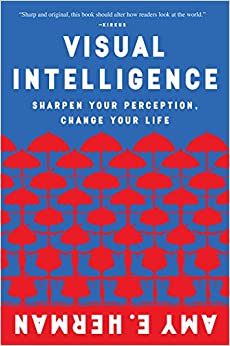 One of my biggest takeaways is, “In everybody's life, things are going to go wrong. We need to understand how we can go from our observations and things going wrong to not making it right, but going forward and not making that mistake again.” I'm not saying better or worse but I know speakers that if a client can't afford to put them in a hotel, they're not going to go. When they called me and said, “Do you mind staying in a convent?” I was like, “I would love to stay at the convent. How cool is that?” I know people that wouldn't do that, “If you're not going to put me in a hotel, I'm not going to come.” There and there, it's almost like putting my headphones in on the airplane. Look at what I learned living in a convent for four days with a bunch of nuns who take care of elderly people? Who gets that opportunity? If you cut yourself off, you're going to cut off those opportunities to learn.
One of my biggest takeaways is, “In everybody's life, things are going to go wrong. We need to understand how we can go from our observations and things going wrong to not making it right, but going forward and not making that mistake again.” I'm not saying better or worse but I know speakers that if a client can't afford to put them in a hotel, they're not going to go. When they called me and said, “Do you mind staying in a convent?” I was like, “I would love to stay at the convent. How cool is that?” I know people that wouldn't do that, “If you're not going to put me in a hotel, I'm not going to come.” There and there, it's almost like putting my headphones in on the airplane. Look at what I learned living in a convent for four days with a bunch of nuns who take care of elderly people? Who gets that opportunity? If you cut yourself off, you're going to cut off those opportunities to learn.
We're coming to the end of our time together and I have one last question to ask you. What are 1 or 2 books that have had an impact on you and why?
If you ask me tomorrow, I might come up with two more books because it changes also. The two books that live rent-free in my head always, the first one is called Ways of Seeing by John Berger. I believe it's a book from the ‘70s and he used art. I don't agree with everything that he said but it was a different way of seeing everything. That's what it's called Ways of Seeing. It planted the seed in my head. It's a little paperback book. It was a series on the BBC. It plants the seeds that, “No matter what you're looking at, there's always another way to say it.” As I tell people, “There are two sides to every story.” You hear something that makes you so angry. I say to my son, “Get the other side before you pass judgment.” That's book number one.
The second book, you're going to probably be surprised when I tell you. It's called The Boys in the Boat by Daniel James Brown. It's about the quest for the gold medal in the Berlin Olympics and this little scrappy team from the University of Washington. It calls to mind a concept that I use all the time in my work it's called Festina lente, “To make haste slowly.” You want to win, but you need to get there mindfully and purposefully. Those boys in the boat or nine Americans were rowers for them for the gold medal. They were the underdog. They beat the Germans in 1936.
I think about how much they had to overcome and how they had to understand each other. They say, “There's no I in team.” Even though we're all out there alone, we are part of a much bigger machine. The quest to that gold medal depended on those nine rowers. I think about teamwork and working with all my stakeholders to get the best result possible. That book propelled me. No pun intended. The idea wasn't about winning the race, but how they could work together, recognizing strengths and weaknesses that changed by the day to do what they had to do.
I love the way you described this because I've heard the book before. I haven't read it and now I'm compelled to go pick it up and read it because I know what it's about.
I’m not even sure the author intended those takeaways because it’s historical. It's not fiction. It's the story of how they won the gold medal. I'm not doing a spoiler alert. Everybody knows it. How this scrappy team of people from across the state of Washington came together to win it and reminding me of the importance of teamwork and recognizing strengths and weaknesses in everybody, myself included.
Amy, I can't even thank you enough for coming to the show. This was such a gift. For me, it means more than you would know.
Empathy is the greatest knowledge because it allows you to leave your ego and get into the mind of somebody else.
Thank you.
Thank you so much for coming on and sharing your stories, insights and all your beautiful gifts. I know people are going to be leaving with many amazing insights. They're going to pick up your book, all of them.
It's been an honor to be on here. I always appreciate being invited and being able to share my message with people that I might not get to see in person. Thank you very much for having me. You're doing great work and you're bringing messages out there through these conversations. All the readers, we're all very fortunate so thank you.
Before I let you go, I wanted to give people an opportunity to find out where they can find you and what's the best location to find out more?
My website is ArtfulPerception.com. I'm going to have a website devoted to my books called ArtfullBooks.com. If you Google Amy Herman or you go to Artful Perception, I am out there and I love to hear from people.
Thank you to readers for coming on the journey. That's a wrap.
Important Links:
- Amy Herman
- A lesson on looking - TEDx Talk
- Visual Intelligence: Sharpen Your Perception, Change Your Life
- Fixed.: How to Perfect the Fine Art of Problem Solving
- Ways of Seeing
- The Boys in the Boat
About Amy Herman
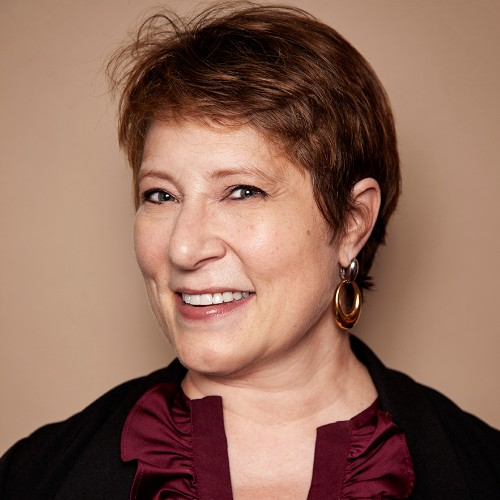 Amy Herman is a lawyer and art historian who uses works of art to sharpen observation, analysis, and communication skills. By showing people how to look closely at painting, sculpture, and photography, she helps them hone their visual intelligence to recognize the most pertinent and useful information as well as recognize biases that impede decision-making.
Amy Herman is a lawyer and art historian who uses works of art to sharpen observation, analysis, and communication skills. By showing people how to look closely at painting, sculpture, and photography, she helps them hone their visual intelligence to recognize the most pertinent and useful information as well as recognize biases that impede decision-making.
She developed her Art of Perception seminar in 2000 to improve medical students' observation and communication skills with their patients when she was the Head of Education at The Frick Collection in New York City. She subsequently adapted the program for a wide range of professionals and leads sessions internationally for the New York City Police Department, the FBI, the French National Police, the Department of Defense, Interpol, the State Department, Fortune 500 companies, first responders, the military, and the intelligence community.
In her highly participatory presentation, she demonstrates the relevance of visual literacy across the professional spectrum and how the analysis of works of art affords participants in her program an innovative way to refresh their sense of critical inquiry and reconsider the skills necessary for improved performance and effective leadership. The program has been featured in The New York Times, The Wall Street Journal, The CBS Evening News, and Smithsonian Magazine, among others. Her TED talk, A Lesson in Looking, went live in December 2018. Ms. Herman holds an A.B., a J.D., and an M.A. in art history. Her book, Visual Intelligence, was published in May 2016 and was on both the New York Times and Washington Post best sellers' lists.
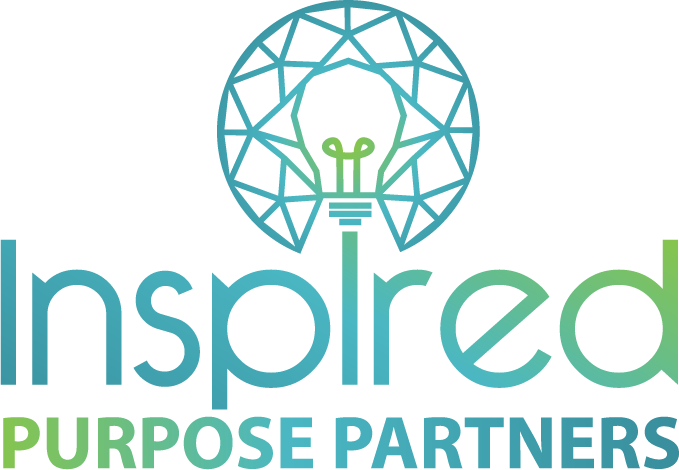

0 comments
Leave a comment
Please log in or register to post a comment